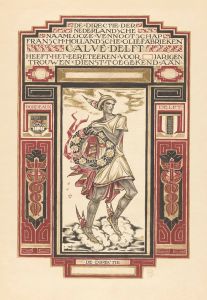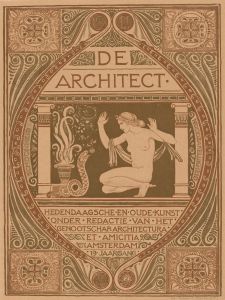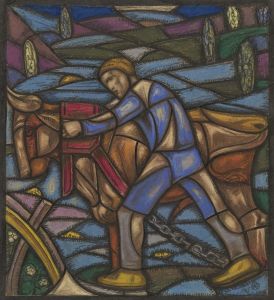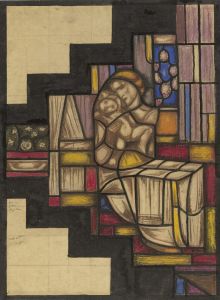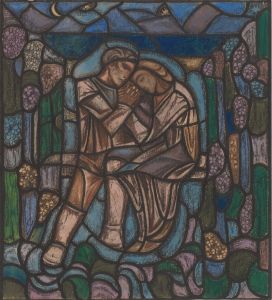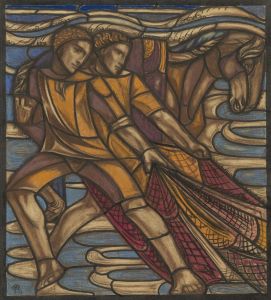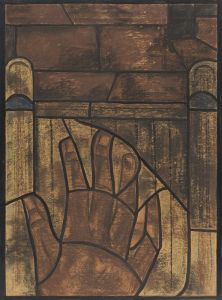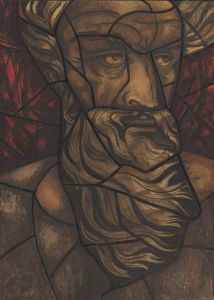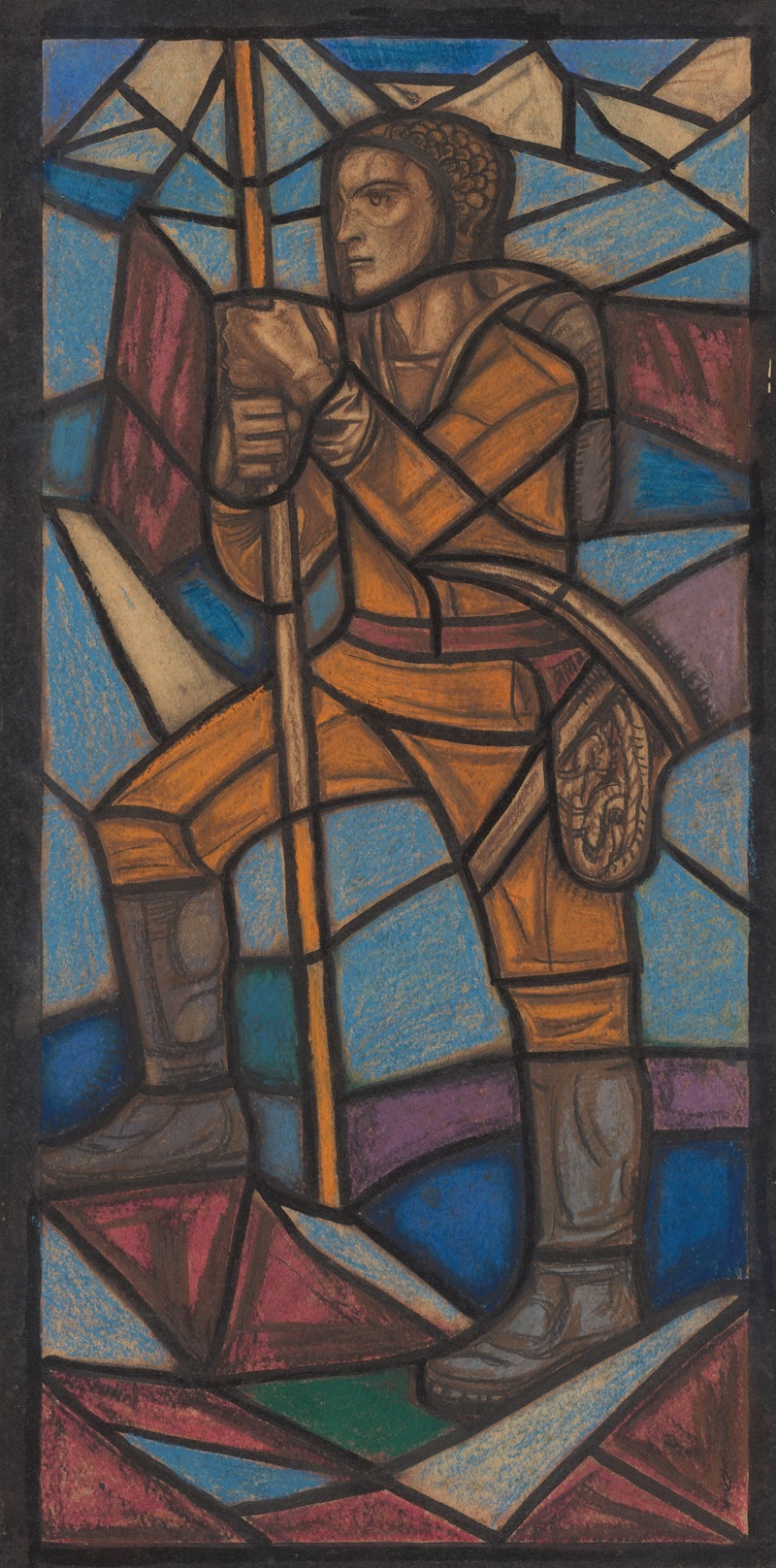
Ontwerp voor raam in het Nederlands Paviljoen op de tentoonstelling Arts Décoratifs te Parijs, 1925
A hand-painted replica of Richard Nicolaüs Roland Holst’s masterpiece Ontwerp voor raam in het Nederlands Paviljoen op de tentoonstelling Arts Décoratifs te Parijs, 1925, meticulously crafted by professional artists to capture the true essence of the original. Each piece is created with museum-quality canvas and rare mineral pigments, carefully painted by experienced artists with delicate brushstrokes and rich, layered colors to perfectly recreate the texture of the original artwork. Unlike machine-printed reproductions, this hand-painted version brings the painting to life, infused with the artist’s emotions and skill in every stroke. Whether for personal collection or home decoration, it instantly elevates the artistic atmosphere of any space.
Richard Nicolaüs Roland Holst was a prominent Dutch artist known for his contributions to the Arts and Crafts movement in the Netherlands. One of his notable works is the "Ontwerp voor raam in het Nederlands Paviljoen op de tentoonstelling Arts Décoratifs te Parijs, 1925," which translates to "Design for a Window in the Dutch Pavilion at the Decorative Arts Exhibition in Paris, 1925."
This work was created as part of the Dutch contribution to the Exposition Internationale des Arts Décoratifs et Industriels Modernes, held in Paris in 1925. This exhibition was a significant event that showcased the latest trends in decorative arts and design, and it is credited with popularizing the Art Deco style. The Dutch Pavilion was an important platform for the Netherlands to display its artistic and design achievements to an international audience.
Roland Holst's design for the window in the Dutch Pavilion exemplifies his mastery in integrating art with architecture, a hallmark of the Arts and Crafts movement. This movement emphasized the importance of craftsmanship and the integration of art into everyday life, often featuring stylized natural forms and a harmonious use of color and line. Roland Holst was known for his ability to blend these elements into cohesive and aesthetically pleasing designs.
The window design likely featured elements typical of Roland Holst's style, which often included symbolic and allegorical themes. His work was characterized by a strong sense of rhythm and a deep understanding of the interplay between light and color, which would have been particularly important in a stained glass window design. Although specific details of the window's imagery are not widely documented, it can be inferred that the design would have reflected Roland Holst's interest in creating art that was both beautiful and meaningful.
Roland Holst was deeply influenced by his contemporaries and the broader artistic movements of his time. He was associated with the Amsterdam School, an architectural style known for its expressive forms and decorative brickwork, which often incorporated stained glass and other artistic elements. His work on the Dutch Pavilion window would have been in line with the ideals of this movement, emphasizing the unity of art and architecture.
The 1925 Paris exhibition was a pivotal moment in the history of design, marking the transition from the ornate styles of the late 19th century to the more streamlined and modern aesthetics of the 20th century. Roland Holst's contribution through his window design would have been part of this broader narrative, showcasing the innovative spirit of Dutch design and its place within the international context.
Overall, Richard Nicolaüs Roland Holst's "Design for a Window in the Dutch Pavilion at the Decorative Arts Exhibition in Paris, 1925" represents an important intersection of art, design, and international cultural exchange. It highlights the role of Dutch artists in shaping the modern aesthetic and their contributions to the global dialogue on art and design during the early 20th century.






